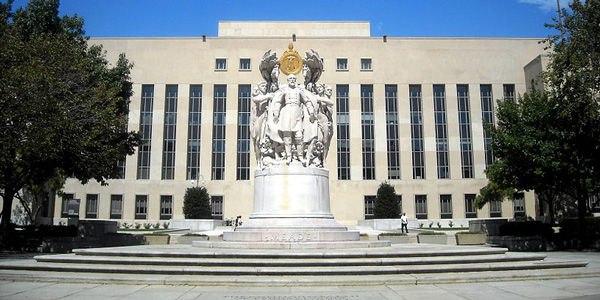By Michael Kuser
The D.C. Circuit Court of Appeals ruled Friday that FERC failed to adequately explain why it approved capacity market rules for ISO-NE in 2014 like those it had rejected in PJM for suppressing prices.
The Feb. 2 ruling granted petitions for review by Exelon and the New England Power Generators Association on rules allowing new suppliers to lock in their first-year clearing prices for six additional years while requiring them to offer at $0 in years 2 through 7 (15-1071).
The decision remanded to FERC its orders rejecting the petitioners’ challenges (EL14-7, EL15-23), saying the orders had “failed to offer adequate rationale and explanation.” (See FERC Upholds ISO-NE New Entry Pricing; Rejects Challenges by Generators.)
“On the record before us, we conclude that FERC did not engage in the reasoned decision-making required by the Administrative Procedure Act,” the court said. “FERC failed to respond to the substantial arguments put forward by petitioners and failed to square its decision with its past precedent.”
PJM Ruling
NEPGA and Exelon contended the rules reduce clearing prices paid to both new and existing suppliers.
The petitioners said the commission’s approval of the rules is at odds with its 2009 ruling rejecting a similar construct in PJM (ER05-1410, et al.). In the 2009 ruling, FERC ruled that zero-price bidding would result in unjust and discriminatory pricing. It said a bid-floor was needed to ensure that a price-locked new entrant “will not reduce [the] price to the existing resources by submitting a $0 bid in years 2 and 3, knowing that it is guaranteed to be paid its first-year bid price no matter what it bids.”
NEPGA and Exelon contend the New England rules are likely to result in more severe price suppression than would have occurred in PJM, which has only a three-year lock-in. In addition, the lock-in — available to any new market entrant in New England — was rarely triggered in PJM.
No ‘Reasoned Analysis’
The opinion by a three-judge panel led by Robert L. Wilkins said FERC “brushed aside the seeming contradiction” between its ISO-NE and PJM rulings.
“FERC’s responses to petitioners’ arguments below amounted to conclusory statements that dismissed petitioners’ concerns without providing reasoned analysis. To respond to petitioners’ main contention that the ISO-NE Tariff rules suppressed prices and discriminated against existing suppliers in a way that the commission rejected in PJM, FERC first stated that conditions in the two markets were different, and then pointed to the vertical demand curve in place at the time under the ISO-NE Tariff. The commission issued this explanation despite the fact that it issued an order the very same day adopting an ISO-NE proposal to start using a sloped demand curve.”
The petitioners argued that the commission should have either rejected ISO-NE’s lock-in rules, required it to eliminate the zero-price offer requirement when it accepted a sloped demand curve or found another way to address the price suppression for existing suppliers.
The court noted that FERC cited “numerous cases to stress the broad array of practical difficulties to balance and interests to consider, including higher consumer prices, reliable price signals, producer flexibility, producer confidence, system reliability, and increasing system capacity and efficiency.”
“FERC contends that it truly has changed its view about the lock-in and capacity-carry-forward rules since its PJM decision and even doubled down by suggesting at oral argument that it would be more receptive to the Tariff changes at issue in PJM if they were proposed today,” the court said. “All this may be true. But FERC’s complex mandate doesn’t relieve it of the requirements of reasoned decision-making. … Although FERC may be sincere in its change of heart and, as a substantive matter, correct that its new rationale is just and reasonable, the commission must provide some analysis and explanation in its orders regarding why it changed course.”
The court declined to rule on whether the petitioners had met their burden to demonstrate that the ISO-NE rules resulted in unjust and unreasonable rates. But it said, “FERC must provide a more robust rationale for its seeming inconsistency with past precedent and practice.”




